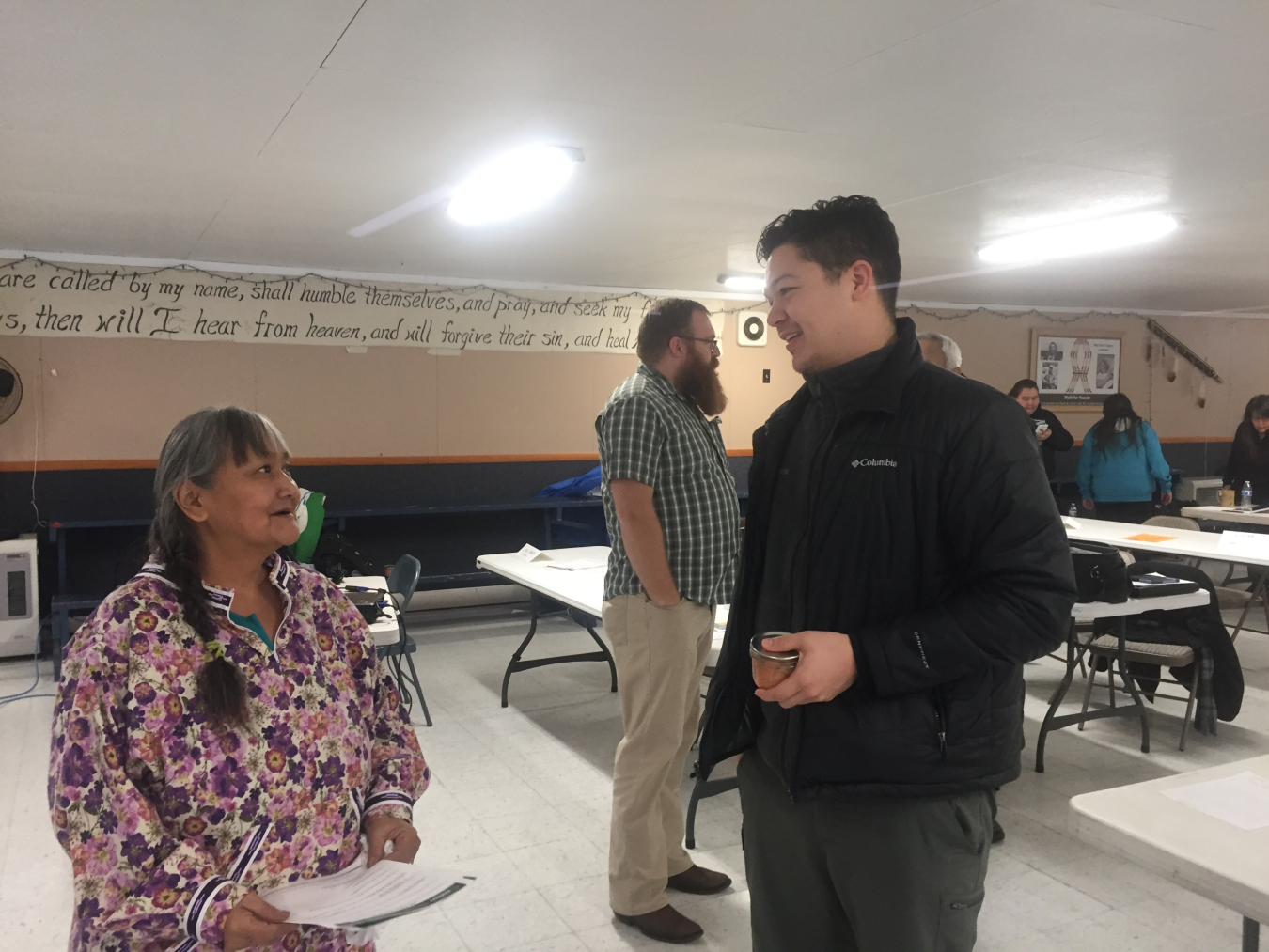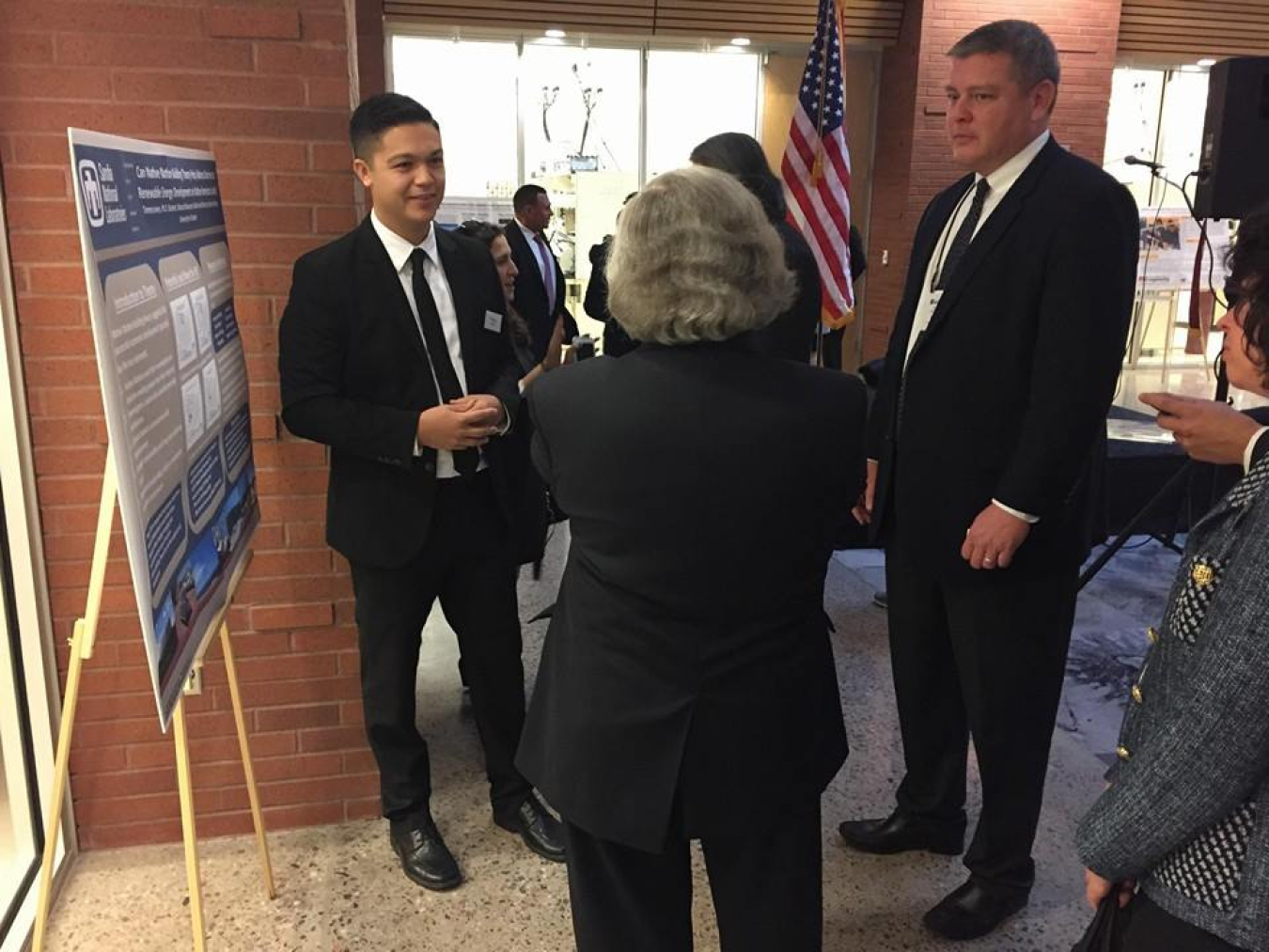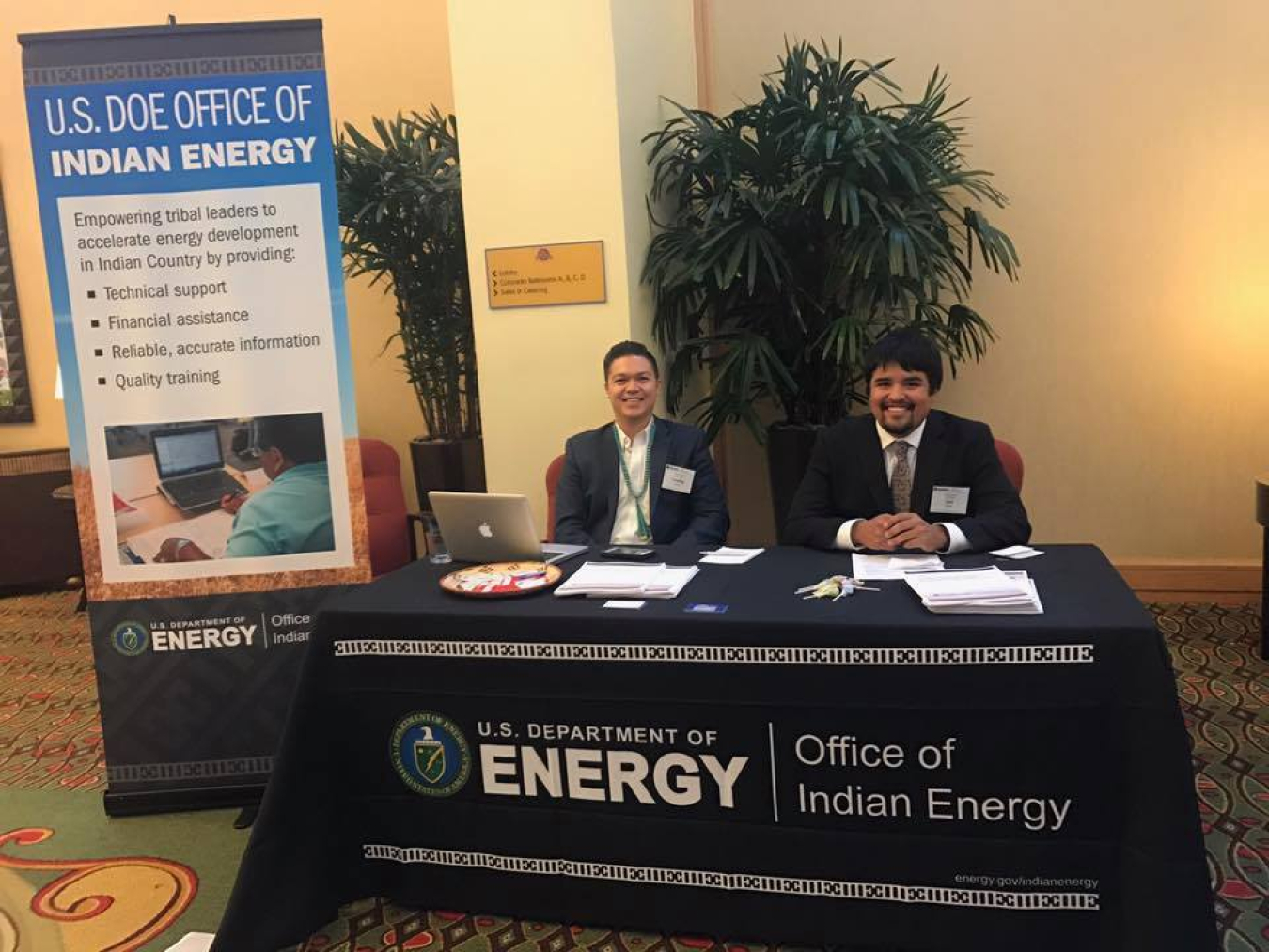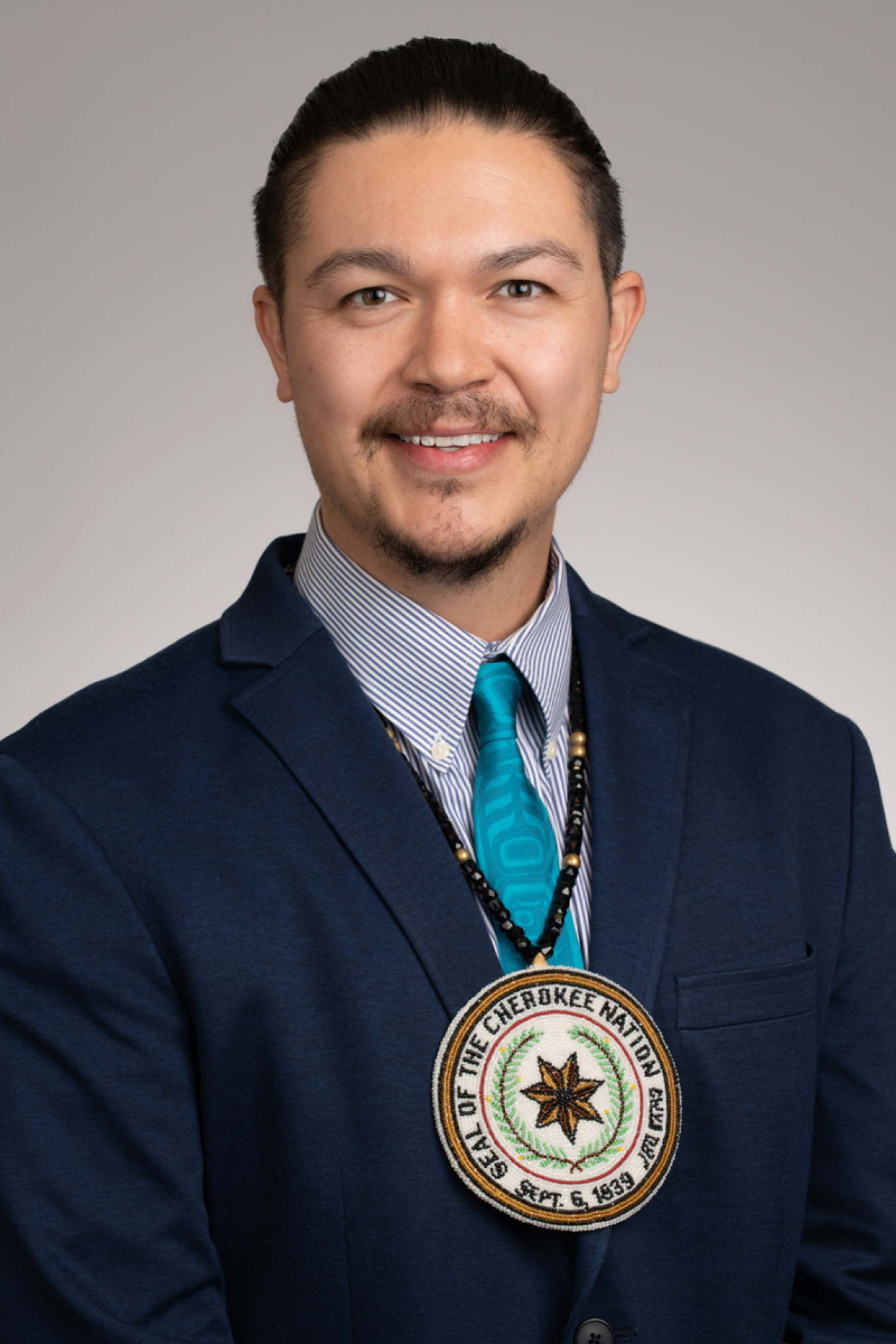Former intern and current DOE contractor Dr. Tommy Jones shares how his experiences as an intern have led to a blossoming career in tribal energy.
Office of Indian Energy Policy and Programs
January 17, 2018The U.S. Department of Energy (DOE) Office of Indian Energy is accepting applications until February 19 for our summer 2018 college student internship program. This month, we're featuring past Indian Energy interns in a series of blog posts. In this blog, former intern and current DOE contractor Dr. Tommy Jones shares how his experiences as an intern have led to a blossoming career in the field—and encourages fellow Natives to take advantage of opportunities to get involved in energy in Indian Country.

My name is Dr. Tommy Jones. I am from Jones, Oklahoma, and I am a citizen of the Cherokee Nation of Oklahoma, Naknek Village Council, and a Native shareholder of Bristol Bay Native Corporation. In 2014, I first applied to the U.S. Department of Energy (DOE) Office of Indian Energy student internship located at Sandia National Laboratories. The transformative experience solidified my desire to work in this field and to contribute to the fast-growing industry of energy development in Indian Country.
During my time as an intern (see my previous blog), my colleague Dr. Len Necefer and I collaborated on a research paper titled Identifying Barriers and Pathways for Success for Renewable Energy Development on American Indian Lands. The goal of the research was to hear from tribal, federal, private, and academic experts who are specifically working in tribal energy. The work was meant to help identify the barriers of bringing the significant renewable energy potential that exists in Indian Country to market for the benefit of tribal communities. Hearing from those who not only work directly on energy issues but rely firsthand on the dependability of energy systems far exceeded my expectations. This type of internship, where students have the opportunity to engage directly with leaders in their field, is exceptional. We weren’t sitting in an office making assumptions about communities across the nation; we were visiting these communities and hearing their stories. The stories we heard about these communities’ struggles, and more importantly their perseverance to meet their energy needs and promote economic development, was life changing. No longer are you simply a student or a researcher. Now, you are involved in the process to help Native Americans meet their energy visions, which benefits those communities, enhances your personal growth, and contributes to the energy independence of the United States of America.

The work I did as an intern translated seamlessly into the Ph.D. program at the University of Arizona that I was working towards. I was able to use the experiences and specifically the research work conducted during my internship to greatly improve my understanding of these topic areas and to complete the requirements for my degree. As a student, I quickly saw myself becoming an expert in my own right due in large part to my experiences and research during the Indian Energy internship.
During my time as an intern I was also given the unique opportunity to work in the Washington, D.C., headquarters office of the Office of Indian Energy. This experience allowed me to analyze the grassroots research I had been working on within the context of broader society and government functions. I was able to see current and future leadership in action and gain a better understanding of how the work I was doing ties into a bigger picture. These type of life experiences shaped who I am as a contributing member to society. The work we do to invest in ourselves is effectually investing in all of Indian Country, and the United States in general. The positive contributions we make benefit all of us, and I’m counting on more Native students to follow suit.

My DOE internship directly prepared me for my current role as a contractor to the Office of Indian Energy. My internship helped me to know the issues, to know the mission of the Office, and to know how valuable the work the Office does is to Indian Country. During our first week on the job, my colleague Dr. Necefer and I were asked to research the impacts of the grants the Office administered from 2010 to 2016. Having a clear picture of the dollars that DOE and tribes have invested in energy development has provided great insight into what the Office has helped accomplish. To date, over 20 megawatts of energy generation capacity has been funded, with energy cost savings of over half a billion dollars for the life of those projects. These installations, along with the tremendous energy efficiency measures installed, will make real financial and energy reliability impacts in these communities. The results of this research have been used for DOE websites and informational materials as well to inform National Congress of American Indians (NCAI), Congressional, and White House requests.

Working as a full-time contractor to DOE, I have been able to work with a growing list of communities as I continue research directly relevant to energy in Indian Country today. For example, while interviewing tribes about energy issues in the contiguous 48 states, we immediately realized how starkly different barriers to energy development in Alaska can be. We decided that Alaska rightfully deserved an independent research initiative to evaluate Alaska-specific barriers. This ongoing research has been an incredible journey for me into the resiliency, strength, and ingenuity that Alaska Natives have in nearly every aspect of their lives. Remoteness, transportation, and extreme weather conditions, among a host of additional barriers, all complicate the energy security and reliability of systems in Alaska. However, the drive of Alaska Natives to improve their quality of life is evident in that since 2002, 56 energy development and efficiency projects in Alaska have been funded through the Office of Indian Energy, valued at over $50 million. Additionally, seven intertribal organizations were established that provide technical assistance across the entire state of Alaska for energy projects in the state.
The internship experience and guidance from Sandia National Laboratories principal member of the technical staff and internship supervisor Sandra Begay directly led to the success I had as a student and that I now see as a professional. I am thankful for the opportunities I have been given and want to encourage more to seek out these life-changing experiences. It is a great time to be interested in energy in Indian County. From the youth to current leadership, there is an excitement about the energy future we can make for ourselves and that of the United States. This is a time of American energy dominance with the America First environment. The First Americans are well positioned to engage in this movement by asserting their energy goals in the culturally appropriate ways they see fit.
Learn more about how the Office of Indian Energy’s college student internship program is sponsoring the next generation of Native leaders in science, technology, engineering, and math studies and careers.
Tommy Jones

Dr. Tommy Jones is the Deployment Specialist for the U.S. Department of Energy (DOE) Office of Indian Energy Policy and Programs. As a Deployment Specialist, Dr. Jones is responsible for assisting the Deployment Supervisor with implementing the Office’s Deployment Programs: Technical Assistance, Financial Assistance, and Education and Capacity Building.
Dr. Jones is from Jones, Oklahoma and is an enrolled citizen of the Cherokee Nation of Oklahoma, Naknek Native Village, and a Native shareholder of Bristol Bay Native Corporation of Alaska. He has extensive experience working with Alaska Native and American Indian tribes regarding governance, natural resources, and energy. Dr. Jones has conducted numerous in-depth research projects that have resulted in informing decision makers of actionable initiatives and has published works related to energy development in Indian Country.
Dr. Jones has separate bachelor's degrees in Biology and Spanish from Oklahoma City University, a master's degree in Tropical Conservation Biology and Environmental Science from University of Hawaii at Hilo, and a Ph.D. in Natural Resources and American Indian Studies from the University of Arizona. He holds certifications in Administration and Management of Native American Natural Resources, Native Nation Building, and as a Project Management Professional. In 2016, he was honored as a recipient of NCAIED’s prestigious Native American 40 under 40 award.
Dr. Jones has worked for the Office of Indian Energy since 2014, first as a Sandia National Laboratories intern, then as a federal contractor, and now as a federal employee. Outside of work he is a Council member on the Colorado Cherokee Circle, which is a satellite community organization of the Cherokee Nation of Oklahoma.
-
 Meet Our Team: Dr. Tommy Jones' Journey from Intern to Office of Indian Energy Deployment SpecialistFrom "Humble Beginnings," Jones applies passion for research to serve Indian Country.
Meet Our Team: Dr. Tommy Jones' Journey from Intern to Office of Indian Energy Deployment SpecialistFrom "Humble Beginnings," Jones applies passion for research to serve Indian Country. -
 Staff member Tommy Jones shares his thoughts on the month-long recognition.
Staff member Tommy Jones shares his thoughts on the month-long recognition.

